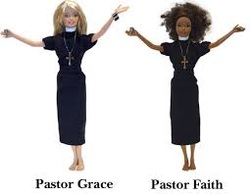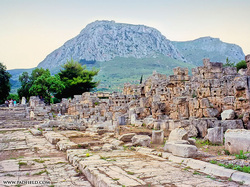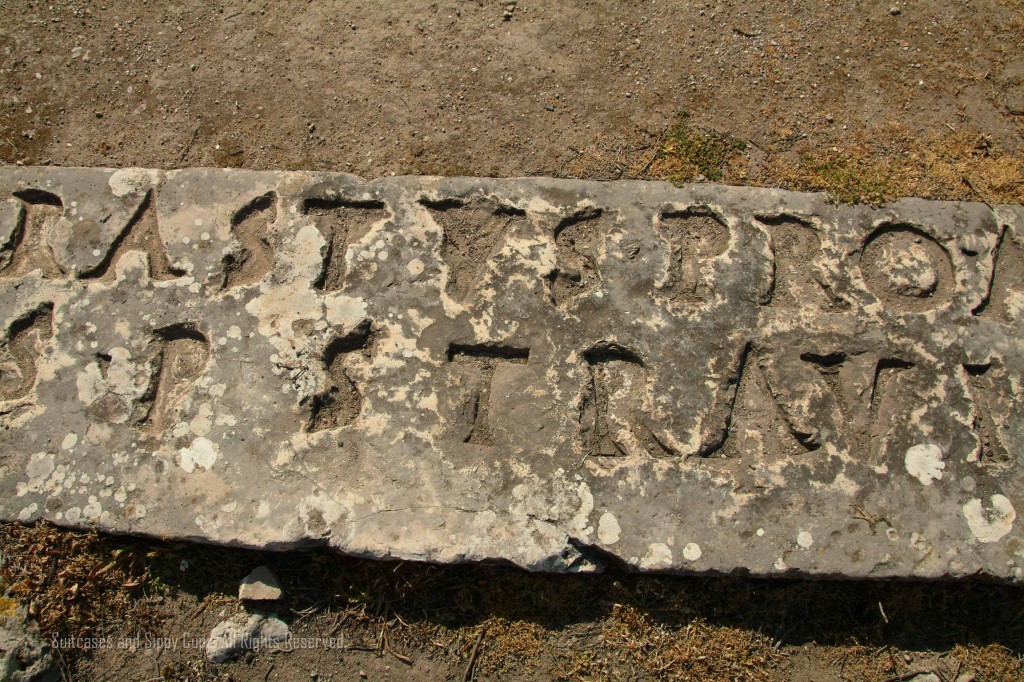|
|
 An Excerpt from my contribution to, "A Faithful Witness:Essays Honoring David Sebastian's Heart and Mind for the Church" In developing a sermon, perhaps we are helped here to discuss the process, the labyrinth from discovery to pronouncement in terms of a series of movements. Some years ago, Andy Stanley and Lane Jones authored a book called; Communicating for Change, and in it they outlined a helpful process for those learning the art of public speaking. In this text, Stanley suggests a pattern of, “Me-We-God-You-We” as the basic road map for effective communication.[1] For Stanley and Jones, the idea is that speakers would craft their material around the ideas above so that the calculated progression of the talk would build towards a climax through the notion of a natural flow of conversation. While Stanley and Jones offer a helpful guide, this essay will tweak the process and suggest some changes to reflect the particularity of sermon craft for the building up of the kingdom of God. Here the discovery of voice is fashioned around the art of story such that the sermon then is crafted from Spirit revelation in God’s story as well as in our own. Our Story The beginning of a sermon intended for the community of the baptized is always the collective human experience. Quite naturally, as we want to draw those assembled into our conversation, into the experience of the Gospel enacted, we begin by building connection. In Blue Like Jazz: Non-Religious Thoughts on Faith, Donald Miller reminds us that people only really listen to the folks they believe genuinely like them.[2] Miller’s point instructs us to remember that in our first moments of proclamation it is crucial that we connect, bond, forge relationship with the listener so that our teaching, our exposition, our truth will be received. To be sure, this is an important first step in the dynamic relationship of preacher and congregation established in the initial moments of the preaching act and it is here that many well intentioned preachers fail to relate to their hearers. This is where a pastor must know intimately her community, must understand the journey they are on together, must be aware of the struggles and losses and celebrations that together weave the story of those who have assembled. Here we reflect on the words of William Willimon who suggests pastors should understand worship as pastoral care. Willimon suggests that the question before each preacher is “How can I help my congregation do what they want to do (worship God) but may not remember how to do?”[3] This becomes more difficult, of course, if the preacher is visiting or is not known to the congregation. In this case, the preacher must be aware of universal needs, conversations that are national and local so that she might engage those who have come to worship. Whatever the context, some common thread must be found and spoken forth so that preacher and congregation hold hands and place trust in one another as together they move forward in the experience. In this task, we are instructed by the example of the Apostle Paul, who was, in every sense of the word, a relational leader. For Paul, it was critical to situate himself within the community so that he might speak to it. Paul was not only a student of Hebrew Scriptures but he was also well versed in the philosophies of Greek culture and Roman religious practices of the day. He was able to know and be known in the communities in which he preached such that after he departed he could write back to them and address specific community concerns. Though there are more examples than space will allow, consider his expert approach in Galatians where at once he is addressing the Celts of Galatia and the Judaizers from Antioch and knows so intimately the debates among them that he is able to thwart both at the same time. In chapter 3, he masterfully scolds the Galatians and discusses salvation in terms of circumcision which is the matter at issue while relating stories of Abraham and interpreting the circumcision act now a matter of heart (3.1-29). [1] Andy Stanley and Lane Jones, Communicating for Change: Seven Keys to Irresistible Communication (Colorado Springs: Multnomah Books, 2006), 46. [2] Donald Miller, Blue Like Jazz: Non-Religious Thoughts on Faith (Nashville: Thomas Nelson, 2003), 222. [3] William Willimon, Worship as Pastoral Care (Nashville: Abingdon, 1979), 18.
0 Comments
 It beats inside our hearts, a rhythm like the rush of a rolling river. The thrum and hum of words whirl and turn inside, attach themselves to images that are long held and known like the crevices of our own hand; the river is true and deep and wide. As children we sat at the feet of storytellers and saints and the ancient narratives caught our hearts, seeds planted and watered were nurtured to grow. We stood with Miriam in the reeds watching over the baby in the basket beside the shimmering cerulean Nile. We sat beneath the palm trees feet soaked in sun and sand and we heard the cries of our children, settled land disputes and listened for God’s call on the wind holding hands with Deborah, prophet and judge of Yahweh’s unfaithful bride. We knew a spiritual kindred, an eternal bond with Mary, this woman child who birthed forth the Word, we knew her, felt her heart, sensed her pain somewhere hidden and true. It is from this river that every preacher must draw, must reach down deep into that well of what she knows, into that current that is at the heart of her becoming to cradle the stories that have been her song to find her own voice, to know her own vessel unto the proclamation of good news. The pilgrimage of voice is a paramount process for every preacher. The labor of discovering one’s own unique timbre lives somewhere beyond the work of exegesis and the historical critical method, far out past manuscript variations, textual and syntactical issues, at the end of Hebrew translation and reception history. On the edge of study and before the birth of proclamation lies the sacred task of giving voice to biblical truth, to emanate words from one’s own story for the good of the community of faith assembled. Those who would prepare then, for the vocation of ministry, for the office of preacher, must do more than learn to mine the Christian texts and holy books. Those whose lives will be given as heralds of kerygma will also need to mine their own lives. Those who are called to the daunting task of preaching must not only be well versed in Biblical languages, Church history, and cultural relevancy, but must also find some confidence in their own unique voice so that the texts and the process must first incarnate the preacher before she might inform and challenge and shape the community. The discovery of voice, then, is shaped around the art of story so that the sermon is crafted from Spirit revelation in God's story as well as our own. Stay tuned for more... (An excerpt from my essay in "A Faithful Witness: Essays Honoring David Sebastian's Heart and Mind for the Church,"to order contact Anderson University School of Theology) What #YesAllWomen, #BringBackOurGirls, and Jesus' Wife Papyrus Reveal About the Hearts of Women6/10/2014  Over the past few weeks it seems like the blogosphere, facebook, and my twitter log have been filled with feminine angst. As I read across some of my favorite posts, it appears as if more than a few of us have bonded over heartbreak and the groundswell of public atrocities such as the kidnapping of 300 innocent girls in Nigeria and the vitriolic videos of the gunman prior to the mass shooting in Santa Barbara. In one week, the twitter hashtag #YesAllWomen reached 1million and the #BringBackOurGirls campaign united nations in the cry for justice and the safe return of the abducted school girls. It is not as if violence toward women is a new phenomenon in our world, perhaps what is new is the emergence of generations of women who have found our voice and now have public forums, such as social media, to collectively express our pain, fear, and white hot anger. As a follower of Christ, a Bible Professor and someone who works with women who are victim to sexual exploitation, I cannot help but wonder about the response of the church. I wonder if it is incumbent upon us to return to conversations about violence toward women in our own sacred canon, to struggle through the pain and confusion of the Biblical narrative which though Spirit breathed, preserves the stories of men, remembered by men, recorded and handed down to us by men. I wonder if this is not an opportune time to consider other ancient texts, ones held in high esteem and considered holy by early Christ followers such as the recently recovered Jesus’ Wife Papyrus which confirms in the least that Mary Magdalene was a disciple and held a position of leadership in the inner circle. I wonder if this is a moment when we should join with newly fashioned #YesAllBibleWomen and begin to resurrect those stories, the counter narrative also present in the canon of named and unnamed women who are a part of the story of God. It seems as crucial now as ever to begin to engage the stories of Miriam and those women prophets, to speak of Sarah and Jael and the wise women of old, to think about Susannah and Judith and Esther, Lydia and the woman caught in adultery, along with the women who remained at the foot of the cross until the end and were the first to arrive at the tomb. I wonder if our sermons and blog posts and teaching series should be filled with new scholarship aimed to reconstruct portraits of these Bible women carved out of stone and dust so we might know them and be better for it. I pray this is an opportunity for the church to harness the momentum and to respond to the palpable cries of women for respect, equality, and a need for a theology that embraces also the femaleness of God as both woman and man are made in the image of our Creator. Travel with me to Rome/Pompeii August 2015 to study Early Church Holy Women Favorite blogs: The Junia Project, Christians for Biblical Equality, SisterMaryDandelion, A Woman at the Well, Unsettled Christianity  It looms there, staring down at us, always watching, always knowing where we are and where we might go. The air thick with the salt of the Aegean, our sandals slap against marble tiles that line the ancient road of Roman Corinth and we listen on the wind for the voices of fish mongers and leather workers, creatures of every color and class and stripe from across the Empire who have washed ashore to find their fortunes. At the fountain, where water used to flow in and out of arches carved out of stone and children would play and women gathered water for the day; it is always present, always in the line of sight. On the bema, where those accused stood before Praetorian guards, it's lofty height is the backdrop, the Acrocorinth, first a Greek acropolis then a Roman citadel and the home of the Temple to Aphrodite. The highest point of the raised city center, an ancient shrine of a by gone temple where the goddess herself was worshiped on the altar of prostitution. It is thought that more than 1,000 women served the temple at any given time in the first century, paying tribute through ritual shearing of their hair and giving their bodies over for sexual sacrifice. It is in this city, in the shadow of the Acrocorinth and under the stronghold of temple sanctioned prostitution where the Apostle Paul joined forces with Prisca and Aquilla to preach the gospel to the hoards of people who flooded the city looking to sell their wares, achieve their wealth and attend the Isthmanian games. It is to the struggling community of the baptized where named city officials and slaves, former synagogue rulers and barbarians, wealthy benefactresses and newly made freedmen that Paul would write of community, give us words for the ages to express the many who are one, it is to this cacophony of humanity Paul would urge, "we are one body." To know the story of Roman Corinth helps us take to heart the words of Paul's correspondence, sent first in response to reports from Chloe's people. To feel the thrum of the city, the vibe of human enterprise and the competition of wills gives us the backdrop needed to consider Paul's exhortation in context. When we understand the stronghold of Corinth was prostitution, we are able to read Paul's recommendations to women in worship in a new light. In first century Corinth, much like today, women sold into prostitution were not free to leave of their own devices. In community of the baptized then, there must have been women who had been smuggled or purchased from the temples, liberated from commercial sex trade. We wonder then if this is why Erastus' name is so important; as the city aedile, did he make financial gifts for the freedom of women possible? Was Erastus instrumental in working together with Paul and Prisca in the freedom of women enslaved? This backdrop then moves us to read chapter 11 regarding the covering of women's heads as they pray in a new light. Suddenly this text is no longer a restriction for women in worship, rather a compassionate consideration, the expectation of authentic community. Here Paul thinks of the women who have been set free from the temple, whose heads are shaven to mark them as prostitutes of Aphrodite and so, he asks women to cover so that the newly freed prostitutes are no longer ostracized by sight. Perhaps all of scripture, just like the Corinthian correspondence must be parsed out this way, by women and men who will walk the ancient roads, study the lost civilizations and unearth the narratives of antiquity that inform our sacred texts. After all, our holy books are living breathing words, artifacts of revelation and the divine, human relationship. Perhaps our study of the people, the times and the stories out of which the texts are formed is as holy as the texts themselves. |
Subscribe Today for Free GiftBLOG
Archives
July 2019
Categories
All
|


 RSS Feed
RSS Feed